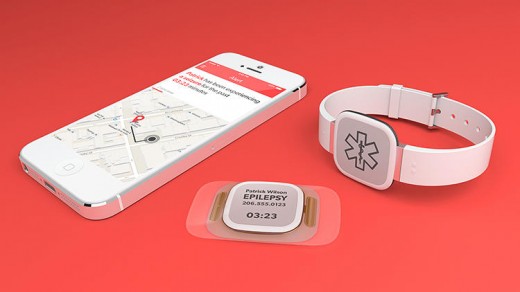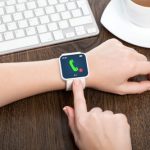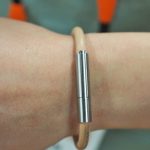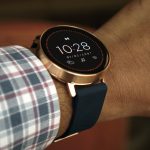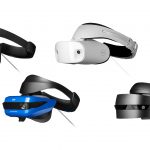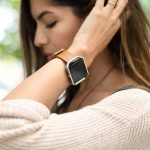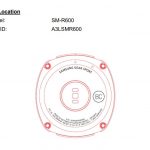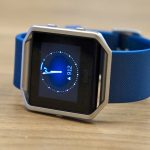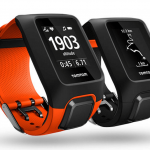past fun: The critical future of Wearables
the next day to come’s wearables would possibly not flip to your microwave or allow you to get out of a nasty date. however they may shop lives.
February 23, 2015
take into account that life ahead of high-velocity web, or when having a smartphone was once considered a luxury? each few years, a new technology comes along, beneficial properties enough traction to grow to be its own class, and has the prospective to change how we are living.
Enter wearables. Some are expecting wearable devices to repeat the expansion sample of smartphones. The class has elevated its global market price through over 1,000% seeing that 2012. extra importantly, the quantity is expected to double over the subsequent three years, achieving U.S. $12.6 billion and establishing wearables because the de facto product category for the linked world. but the prevailing knowledge amongst many purveyors of wearables that their merchandise merely want to be cool—A ring that turns on your microwave! A necklace that triggers pretend cellphone calls!—is obvious mistaken. the way forward for wearables is decidedly pragmatic. Wearables will maintain the elderly, help the disenfranchised, and maybe even help shop lives.
Wearables today
increased market penetration and an aggressive price fight among corporations selling wearables prompts a question: no longer whether or not wearable sensors (similar to biometric and environmental screens) will commoditize, however when?
simply take a look at contemporary startups and innovations. Seattle-based totally Pivotal dwelling, is releasing basic health wearables for as little as $12, including a one-12 months membership to a customized health administration utility. earlier this 12 months, a group from the nationwide college of Singapore developed a postage-sized instrument that can energy normal wearables via pores and skin friction, taking away the necessity for batteries.
but a limiteless section of wearable offerings nowadays are being developed for niche technology fanatics. The Journal of the American clinical affiliation declared that 1/2 of the population the usage of wearables “is younger than 35 years outdated and earns greater than $one hundred,000 a 12 months.” This effort incessantly results in an array of products that are frequently feature-centric, over-sophisticated or, as Bloomberg places it, “roughly stupid.” CES 2015 provided us with enough examples of such wearables, prompting NPR to move even further and problem listeners to bet which of three outlandish wearable devices were real. as of late’s wearables are unquestionably enjoyable. however they run the chance of making the similar of a sugar rush—a surge in pleasure followed by way of a crush of indifference.
helping those who need It Most
In a global where wearables are widely available, low cost, and energy-environment friendly, what are the alternatives to impact no longer only the privileged, but in addition the underserved?
computerized well being Coordination
according to the United nations more than forty three million folks global are forcibly displaced on account of war and persecution—the easiest quantity for the reason that mid-Nineties. one of the most urgent concerns in refugee camps is the absence of coordination techniques that may determine, diagnose and deal with huge populations in the event of a illness outbreak. data is in most cases self-said or retrieved the usage of analog strategies, which makes it simple to lose data and tough to improve an effective response technique.
rising merchandise may help resolve this downside. Kickstarter-backed Khushi has developed a wearable necklace for babies within the creating world to enhance vaccination rates. An NFC chip holds vaccination knowledge, making a choice on a child’s scientific historical past and connecting the guidelines to a global vaccine database—all without the necessity for batteries or an internet connection. This initiative, still within the early construction stage, is already underway in India. imagine the influence it will probably have in refugee camps and warfare zones.
increased get admission to to Care
in line with a 2014 Kaiser household foundation learn about, greater than 60% of adults who did not have medical health insurance mentioned that the main cause they weren’t insured used to be because the value used to be too high. but insurance firms and well being care providers lose cash treating ailments that might’ve been avoided via preventive care. Can wearable technology assist shut the hole between preventable disease and the cost of remedy?
A learn about by using the McKinsey world analysis Institute suggests that a wearable solution to preventive care is also cheaper than current options. via continuous monitoring quite than periodic checking out, physicians could scale back remedy prices with the aid of as so much as 10% to twenty%, saving billions of bucks within the care of congestive heart failure by myself, the study mentioned.
that is the intent at the back of gadgets like wearable heart display AliveCor. And whereas some insurance providers have yet to quilt devices like that, corporations comparable to Oscar are leaping at the probability. Oscar gives free health-tracking gadgets to its consumers, providing up to $240 of annual insurance coverage incentives in line with engaging in day by day fitness objectives. In doing so, Oscar is selling wholesome lifestyles that could probably shop hundreds of thousands of greenbacks.
beyond the wrist: A physique of latest opportunities
whereas nearly all of wearables as of late are designed for the wrist, new kind components are growing alternatives with broader applications and doable for social impression. imagine having the ability to put on an smart device nearly any place on the physique with out ever having to charge it.
A mechanical pores and skin from Northwestern university and the university of Illinois includes a sunblock-like wearable device that may detect temperature, blood glide, and adaptations in skin hydration to alert the wearer of doable problems. Our own thought, Dialog, imagined a tool that may be worn beneath garb to allow individuals with epilepsy to easily and discretely file data that provides insights into their situation.
computerized Self-exams
Breast cancer is the most common cancer among women worldwide. virtually 50% of breast cancer circumstances and 58% of deaths occur in much less developed nations. additionally, individuals in low-income areas have a smaller probability of survival than people in excessive-earnings areas, largely as a result of the lack of early detection packages.
Cyrcadia health is creating an wise breast patch that tracks and analyzes circadian mobile tissue changes. at the similar time, the corporate populates a world library of phenotype/genotype information that contributes to the state of breast most cancers research international.
it’s easy to peer how wearable know-how might help detect and prevent different types of most cancers or serious ailments by way of assisting people with general and early self-analysis checks.
far off delivery
according to the United international locations population Fund, family planning is a key think about reducing poverty. but some 225 million ladies who need to use secure and efficient family planning strategies are unable to do so because they lack access to data, products and services, or the strengthen of their partners or communities.
Microtech Biochip, an organization devoted to revolutionizing the drug delivery and biosensing industry, obtained a provide from the invoice & Melinda Gates basis to boost a microchip-based contraceptive implant that provides sixteen years of reversible delivery control for ladies in growing international locations. The implant is placed beneath the skin throughout a simple workplace procedure the usage of native anesthesia. as soon as implanted, the software will also be wirelessly activated or deactivated by using a physician or the affected person, without requiring elimination. as well as, physicians can wirelessly modify the frequency or dose of the drug to fulfill the individual desires of each affected person.
in all probability the next-generation wearable supply applied sciences could determine particular nutrient deficiencies and ship the vital dose with out the necessity for human assistance. the identical expertise will be applied to patients with diabetes, anemia, or hypertension.
offering Holistic Insights on health
Most wearable gadgets and companion apps handiest learn and keep in touch quantitative biometric data that, albeit helpful, fails to consider emotional health. but the technology is to be had to close the loop between physical and psychological well being, and a few prime companies are already exploring the possibilities in the intersection space between the two.
research carried out over 19 years on 300,000 take a look at topics led beyond Verbal to discover an algorithm that uses voice recognition to determine the whole spectrum of human emotions and personality. Their wellness API is at present being integrated into wearable devices so they may be able to observe emotional dominance, positivity levels and mood fluctuation, offering insights to boost remote psychological remedy. it’s this way that may make wearables priceless as we strive to alleviate severe conditions and problems.
publish-traumatic Stress disorder (PTSD) treatment
in keeping with one estimate, 460,000 war veterans from the up to date wars in Iraq and Afghanistan suffer from PTSD. If this number sounds alarming, imagine that it’s best a fraction of the 5.2 million americans who suffered from this condition in 2014 alone. simply 21% of this largely underserved and frequently overpassed inhabitants receives what medical professionals believe “minimally ample treatment.”
a few organizations and researchers have tried to seek out options that lend a hand victims get well their emotional ground but have struggled. Wearable expertise deals an avenue to remotely alert caregivers of physiological changes—including perspiration and improved temperature—that would possibly signal the onset of occasions like nervousness assaults and different PTSD symptoms.
Neumitra, a brand new project spun out of the MIT Media Lab is currently growing a tool that makes use of advanced sensor expertise to measure galvanic pores and skin response and electro dermal activity to isolate stress responses within the apprehensive device associated with emotional well being, triggering particular insights, visualizations, and movements like sending a comforting message or playing a soothing tune.
Digital Caregivers
according to the Populations Reference Bureau, populations in creating international locations will age hastily within the coming decades: The collection of older persons (those sixty five or older) in much less developed international locations is predicted to extend from 249 million to 690 million between 2000 and 2030. casual care—regularly provided via spouses, adult children or different family members—bills for many of the care that the elderly presently receive in creating nations.
The dangers and burden associated with casual caregiving embrace deterioration of caregivers’ health due to extended work hours and stress, as well as insufficient scientific enhance for those receiving care. this is especially related in growing countries where a scarcity of state-supported services way sufferers regularly receive casual care.
Human connection, emotional closeness and nurturing strengthen proceed to be priorities in the patient-caregiver relationship but they’re incessantly shadowed by medical obligations that drain the caregiver. From biometric monitoring to emergency indicators and medication administration, wearable technology can lend a hand automate these necessary actions, permitting caregivers to focal point their time on offering more emotional care.
Preventice physique Guardian is a non-intrusive wearable physique sensor that permits physicians to watch a patient’s psychological information anyplace, each time. Developed via the Mayo sanatorium, physique Guardian is among the few FDA-approved devices that leverages expertise to both solely substitute or alleviate the need for a caregiver. this is performed by way of automating key services like working out the cardiac function of unexplained symptoms, measuring therapy effectiveness, and monitoring respiration with far off connection to a health facility.
Design for Social impression
the opportunity outlook for wearable know-how is no doubt captivating. It expands a ways beyond the present client electronics space and has deep attainable to disrupt entire industries whereas enhancing the lives of hundreds of thousands of individuals. The commoditization of sensors will open up new avenues to get entry to underserved populations and provide them with higher well being care. as well as, new kind elements will push designers to rethink wearables as totally adaptable gadgets that should turn out to be part of our day by day lives, no longer best quantifying but additionally providing perception into our complete, more human selves.
The problem for designers of wearable devices is exciting, if somewhat daunting. Wearables, especially those supposed for health, have the absolute best pressure to no longer best ship a critical provider, but also carry a design in order to seamlessly integrate into individuals’s advanced lifestyles. The challenge turns into even more advanced whilst you consider low-useful resource settings, comparable to catastrophe zones and refugee camps. the real penalties (each meant and unintended) of innovation on this area will handiest be known over again designers advance and take a look at ideas in real situations. There will be additional risks and challenges: the way to keep information non-public, how you can design against technological obsolescence, how one can stability completely different stakeholders, and more. but when we acknowledge both the fascinating and undesirable outcomes of innovation, we are going to be capable of mitigate risks and open a path for real progress.
(235)

